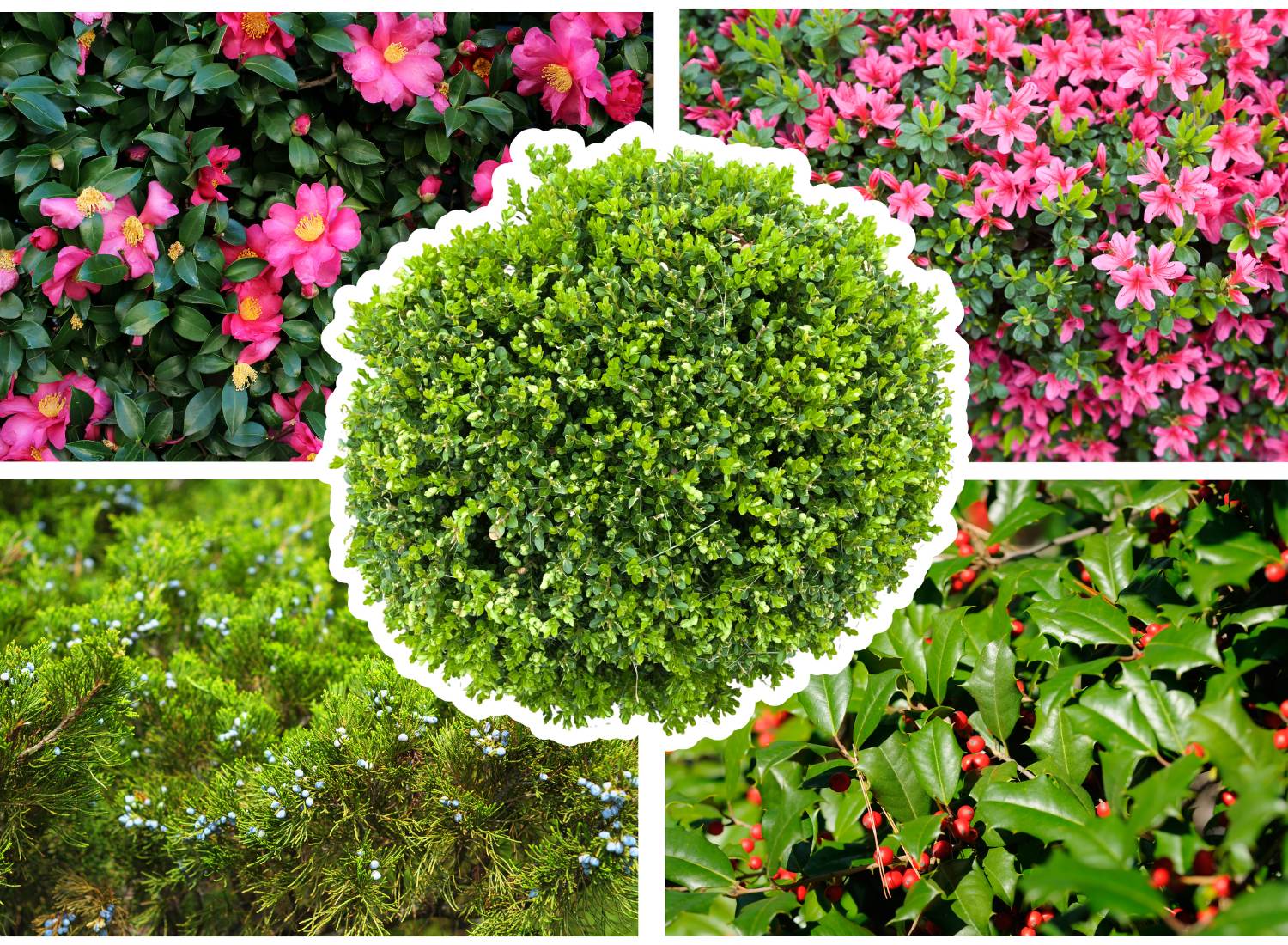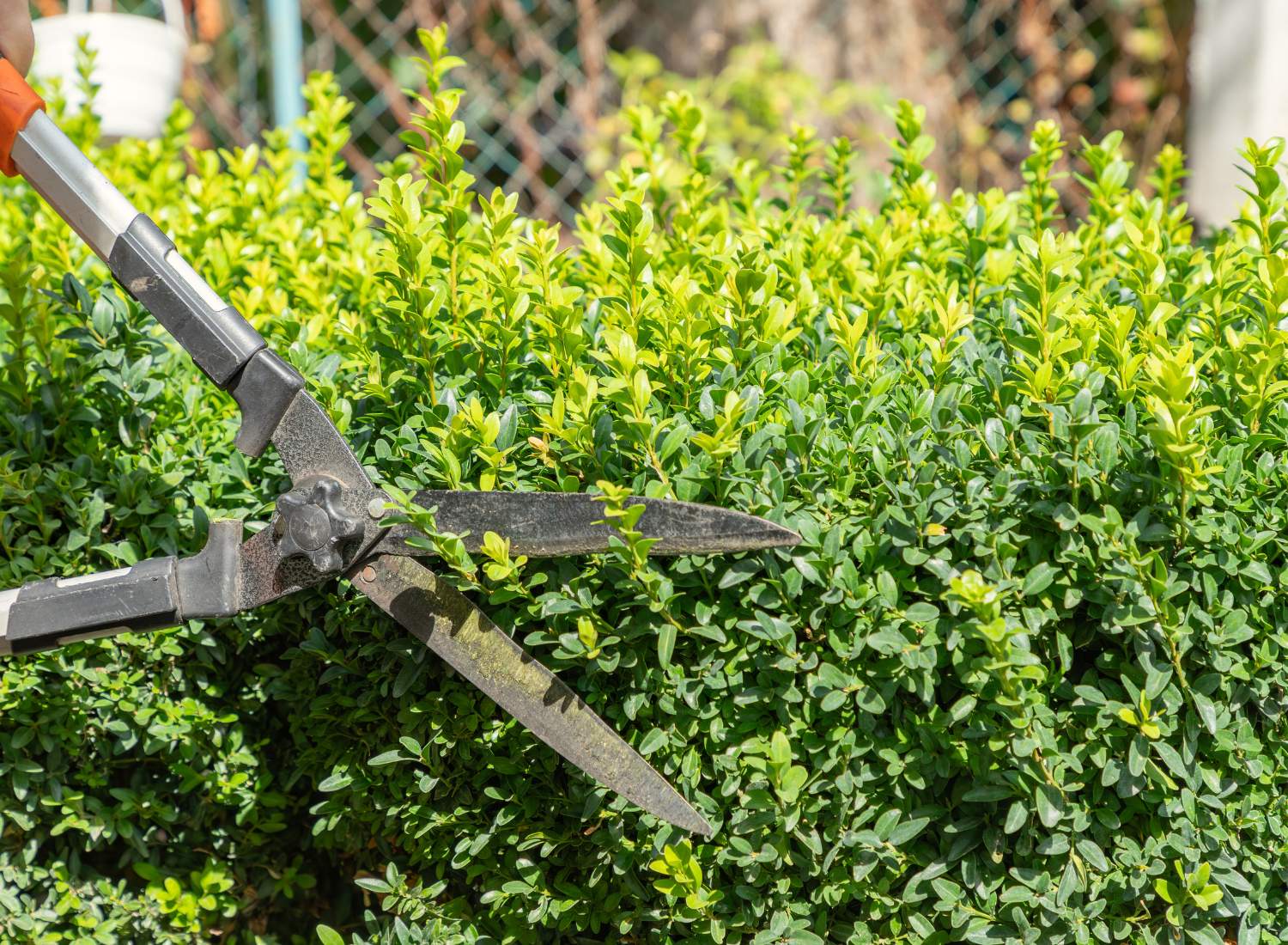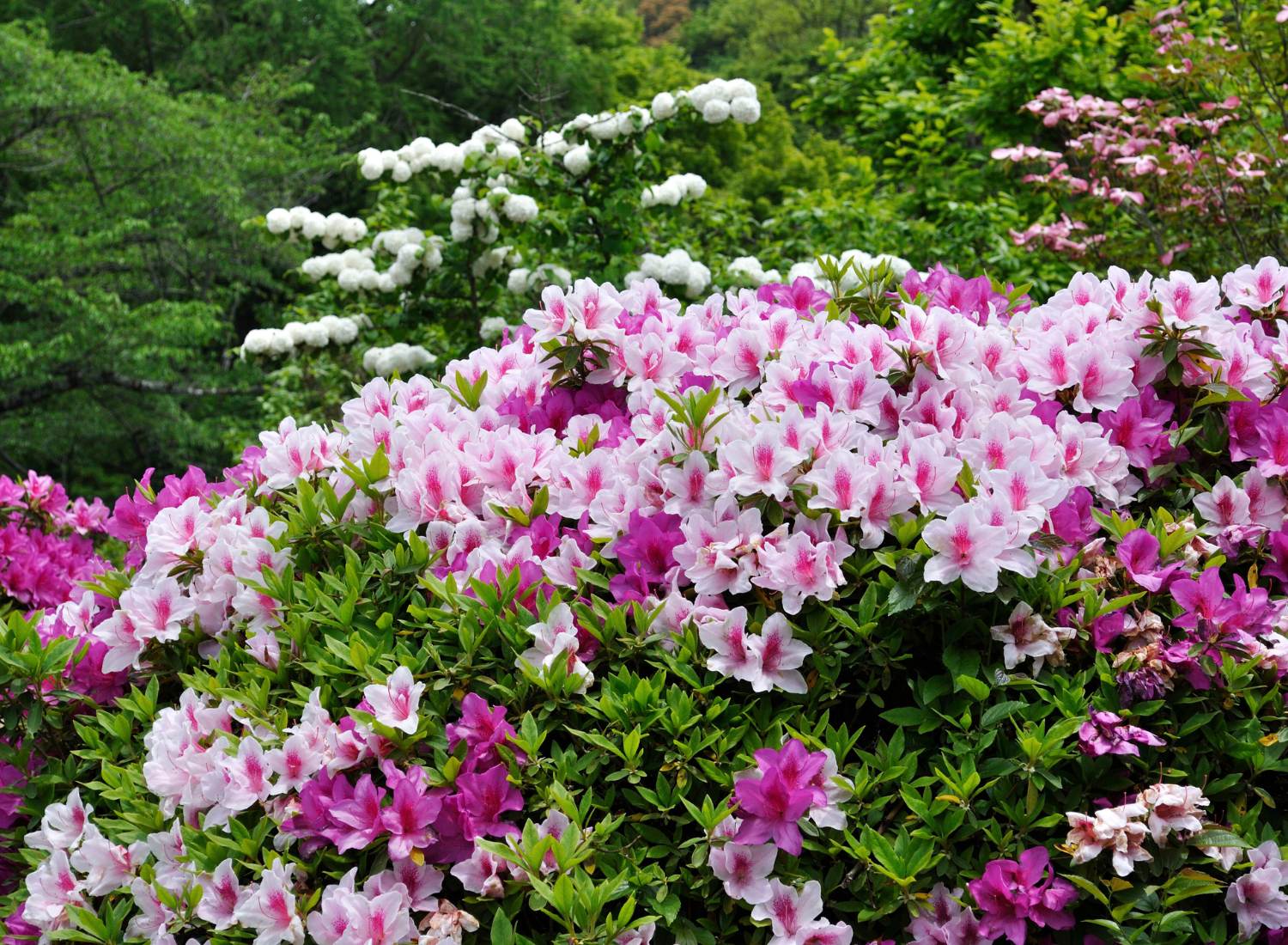The Best Evergreen Shrubs to Keep Your Garden Colorful Year-Round

Evergreen shrubs are a fantastic addition to any landscape. They add year-round color, structure, and texture, creating a vibrant garden no matter the season. Evergreen shrubs also vary widely in terms of size, appearance, care requirements, and cost, making it easy to find one suited to your specific needs. Here’s a look at five popular evergreen shrubs that thrive across the United States to help you make the best choice for your garden.
1. Boxwood (Buxus spp.)

Boxwood shrubs are a classic choice for many American gardens and landscapes. Known for their dense, green foliage, boxwoods are highly versatile and can be shaped and trimmed to fit various designs, from formal hedges to sculpted topiaries.
Pros
- Size: Available in dwarf varieties (2-3 feet) to larger types (up to 6 feet), allowing flexibility in placement.
- Appearance: Lush, dense foliage ideal for formal hedges, borders, and topiary designs.
- Care Requirements: Low-maintenance once established, with moderate water and pruning needs.
- Longevity: Long-lived if properly cared for, adding value to your landscape over time.
Cons
- Susceptibility: Prone to boxwood blight and other diseases in humid climates.
- Soil Requirements: Prefers well-drained soil and can struggle in poorly draining areas.
- Cost: Moderately expensive compared to faster-growing shrubs due to their slow growth rate.
2. Holly (Ilex spp.)

Holly shrubs are a festive addition to any landscape, offering shiny green foliage and vibrant red berries that attract birds and add winter interest. American Holly and Japanese Holly are two common species widely used in landscaping.
Pros
- Size: Available in many varieties, from dwarf shrubs (2-3 feet) to large specimens reaching over 15 feet.
- Appearance: Deep green, glossy leaves with attractive red or black berries, perfect for winter color.
- Wildlife Value: Berries attract birds, adding an element of biodiversity to your garden.
- Durability: Tolerant of both sun and shade, and many varieties are quite hardy.
Cons
- Prickly Leaves: Some holly varieties have sharp leaves, which may be uncomfortable near high-traffic areas.
- Slow Growth: Can be slow-growing, which means longer wait times for a fully mature plant.
- Care Requirements: Needs annual pruning to maintain a neat shape and remove any dead branches.
- Cost: Larger holly varieties can be relatively expensive, especially as mature specimens.
3. Juniper (Juniperus spp.)

Junipers are extremely hardy evergreen shrubs, adaptable to a wide range of climates and soil types. Known for their needle-like or scale-like foliage, junipers come in a variety of shapes, from low groundcovers to tall, narrow shrubs.
Pros
- Size: Wide range of sizes from ground-covering types to upright varieties over 10 feet tall.
- Drought Tolerance: Extremely drought-tolerant once established, making it a low-water option.
- Low Maintenance: Minimal pruning and care are needed to keep junipers looking their best.
- Versatility: Works well in rock gardens, borders, and as a windbreak or privacy screen.
Cons
- Sharp Foliage: Needle-like leaves can be sharp, making them less ideal for areas where people frequently walk by.
- Susceptibility to Pests: Can attract spider mites, particularly in hot, dry areas.
- Growth Habit: Some varieties may spread aggressively, potentially crowding out other plants.
- Aesthetic Appeal: The spiky, dense foliage is not suitable for all landscaping styles, particularly softer, cottage-style gardens.
4. Azalea (Rhododendron spp.)

Azaleas are a stunning choice for anyone looking to add bright spring color to their landscape. While they are known for their vibrant spring blooms, evergreen azaleas retain their leaves year-round, providing color in all seasons.
Pros
- Appearance: Stunning spring blooms in colors ranging from pink to red, white, and purple, with year-round green foliage.
- Size: Available in compact forms that fit well in smaller gardens, typically ranging from 2-6 feet tall.
- Low-Maintenance: Minimal pruning is required, and azaleas are fairly easy to shape.
- Shade Tolerance: Thrives in partial shade, making it ideal for shaded gardens or woodland landscapes.
Cons
- Soil Requirements: Prefers acidic, well-draining soil, which may require amendments in some regions.
- Moisture Needs: Requires consistent moisture, particularly during bloom time, which can be challenging in drought-prone areas.
- Cost: Mid-to-high price range depending on the variety, especially if you’re looking for larger or rarer types.
- Pest Susceptibility: Vulnerable to lace bugs and spider mites, which can damage foliage.
5. Camellia (Camellia japonica and Camellia sasanqua)

Camellias are beloved for their rose-like flowers that bloom in late fall through spring. Their glossy, dark green leaves and multi-seasonal blooms make them a wonderful addition to gardens in mild to warm climates.
Pros
- Appearance: Gorgeous, rose-like flowers in pink, red, and white, combined with shiny evergreen foliage.
- Bloom Period: Blooms in cooler months (fall, winter, or early spring), adding beauty when other plants are dormant.
- Shade Tolerance: Prefers partial shade, making it versatile for planting under trees or in shady garden spots.
- Durability: Camellia japonica is more frost-hardy, while Camellia sasanqua is more tolerant of sun and heat.
Cons
- Climate Sensitivity: Not ideal for colder zones; best suited for USDA zones 7-9.
- Soil Requirements: Requires acidic, well-draining soil similar to azaleas, which may require adjustments.
- Maintenance: Needs pruning after flowering to keep a neat shape and prevent legginess.
- Cost: Camellias can be pricey, especially larger, more established plants or specific color varieties.
Conclusion
Choosing the right evergreen shrub can make a lasting impact on your landscape, adding year-round color, texture, and structure. From the formal elegance of boxwoods to the vibrant blooms of camellias, each shrub brings its own unique beauty and requirements. Whether you’re looking for a drought-tolerant option like juniper, or a shade-loving azalea for bright spring blooms, these five shrubs offer diverse and valuable options for gardens across the United States. Remember to consider the specific needs of your garden in terms of climate, soil, and available sunlight before making your final choice. With the right evergreen shrub, you’ll enjoy a beautiful, low-maintenance landscape for years to come.